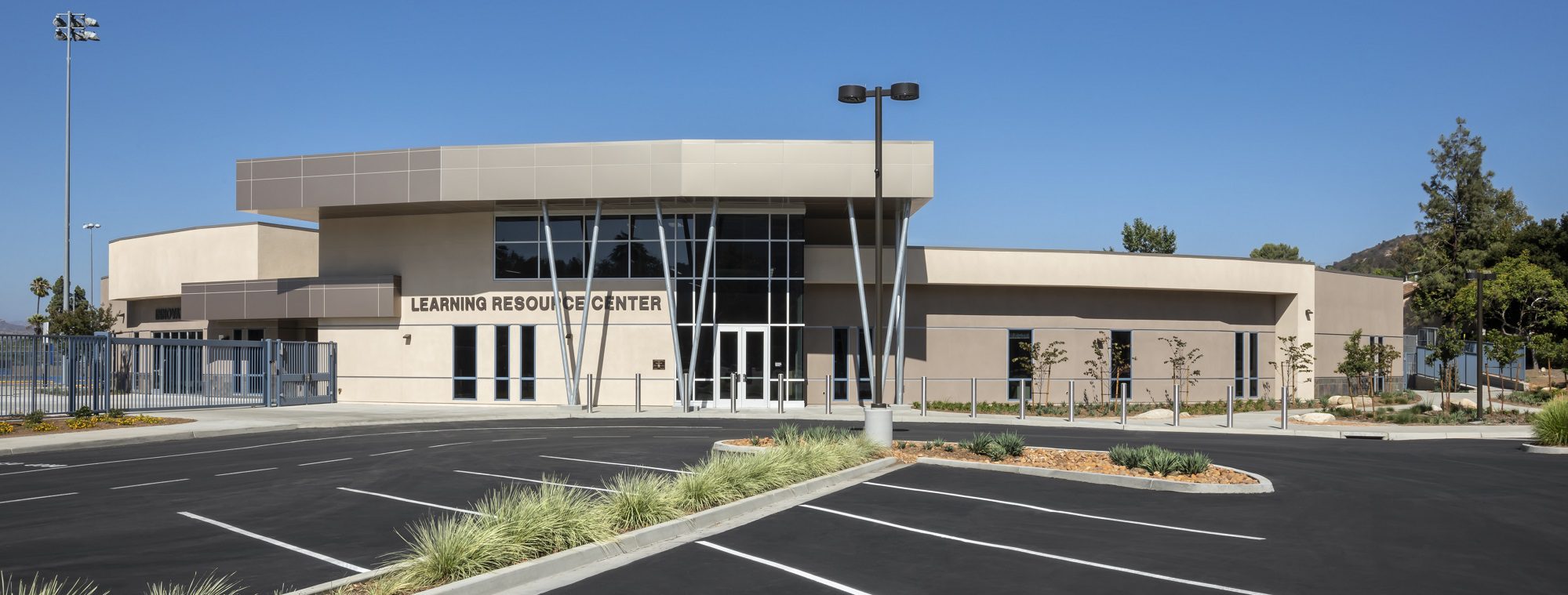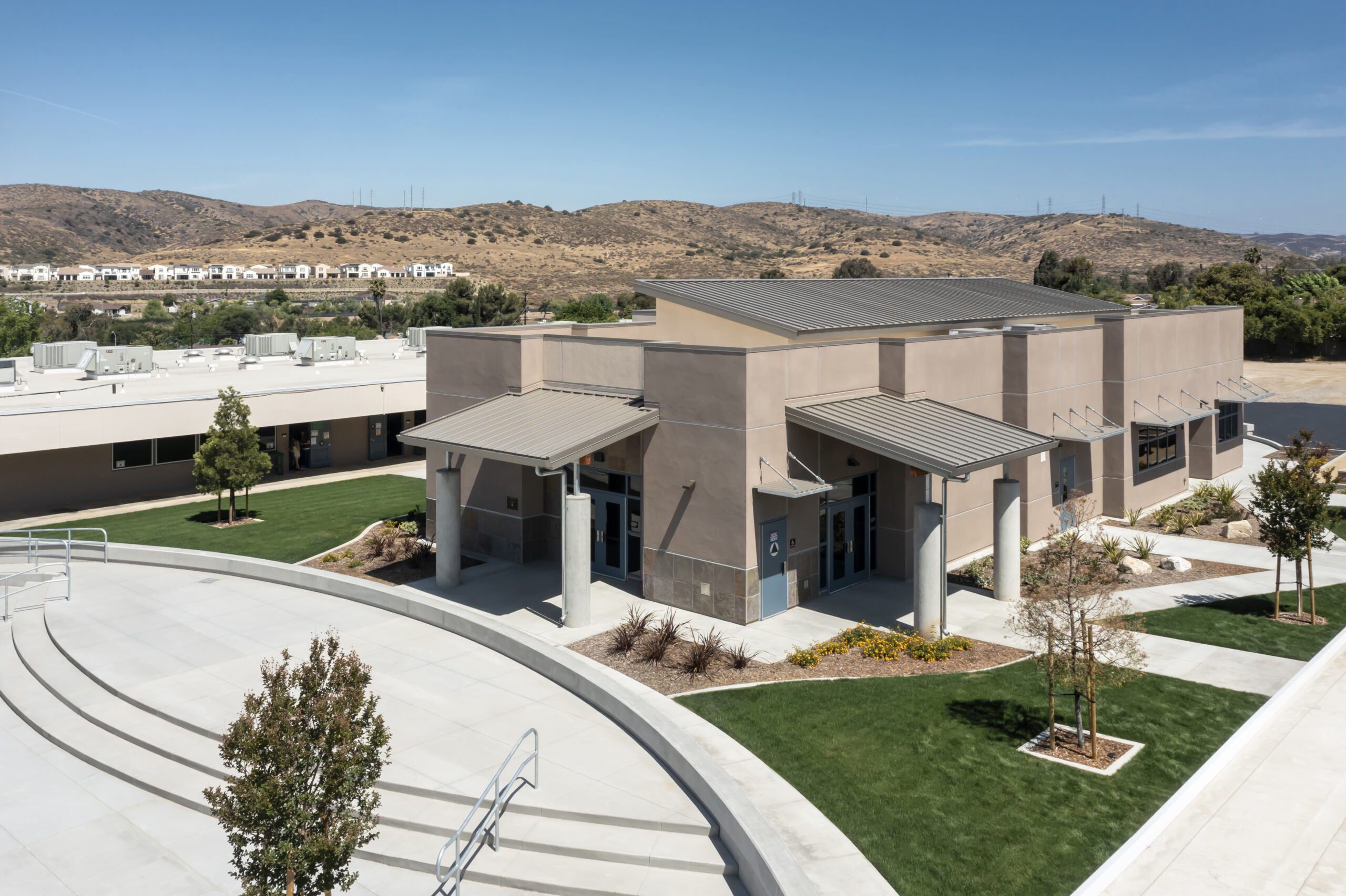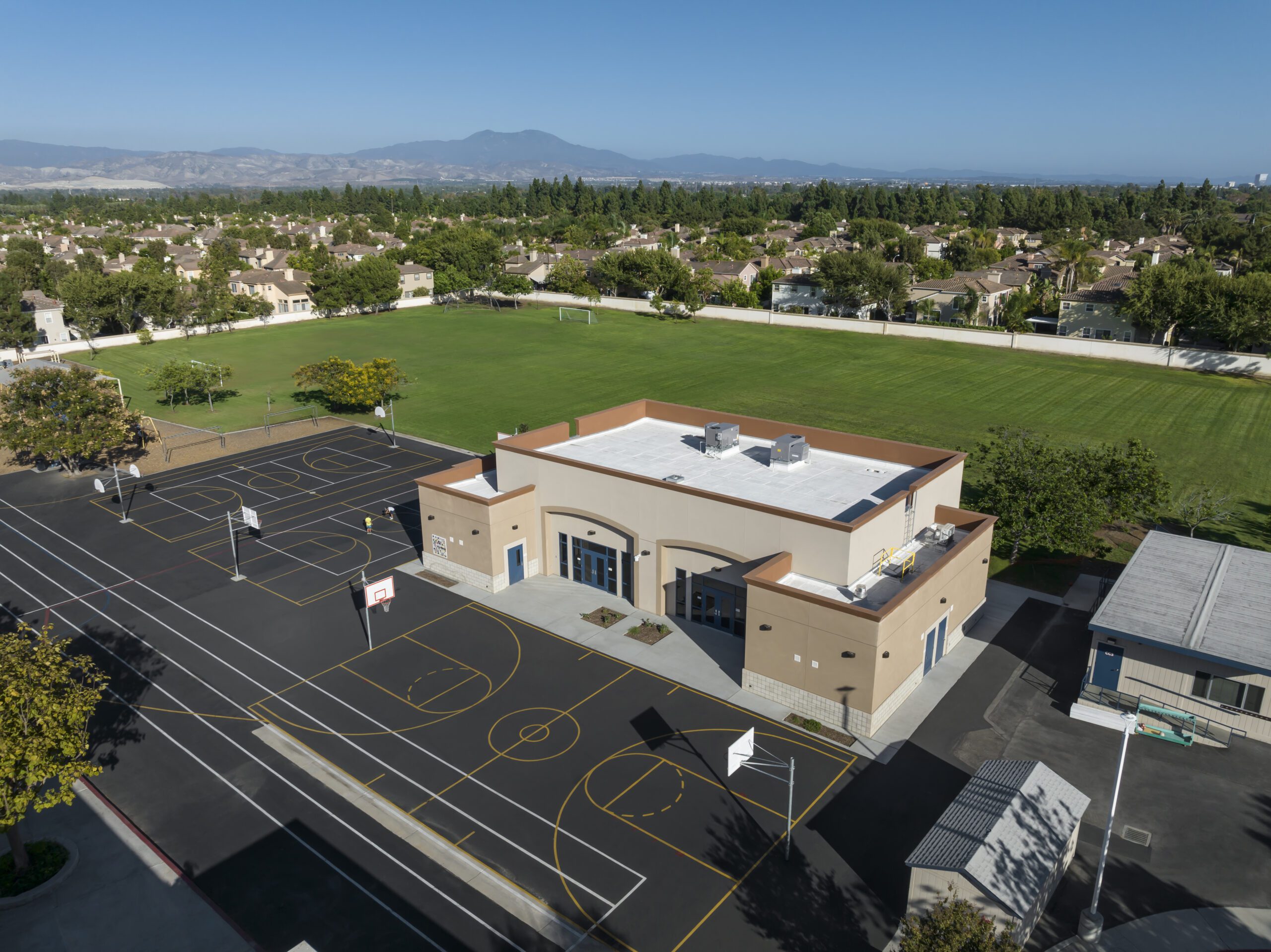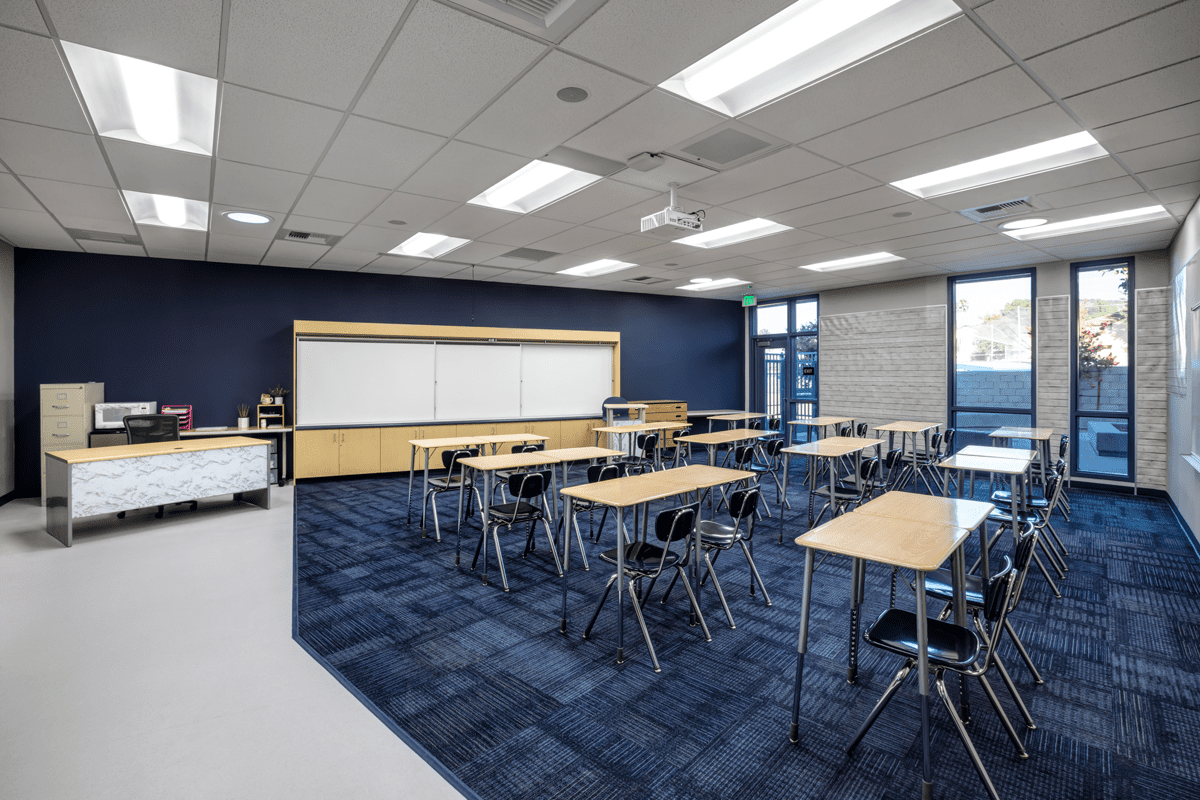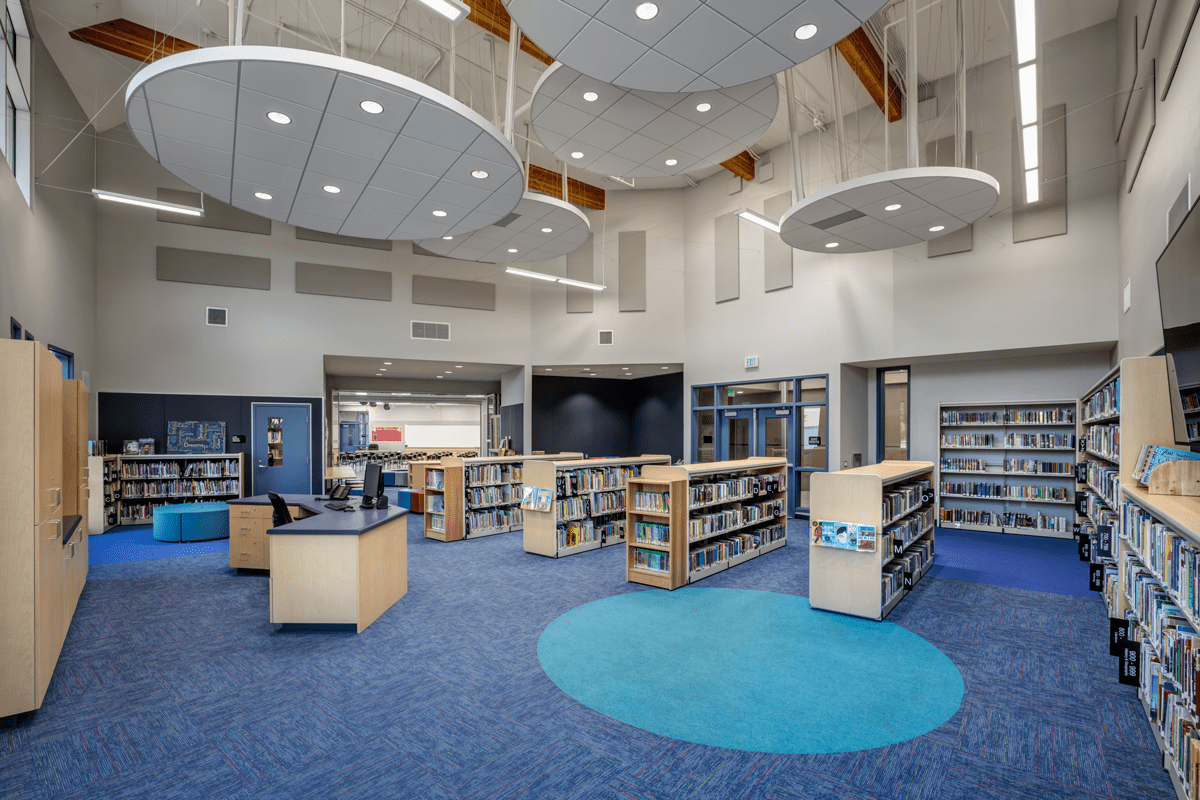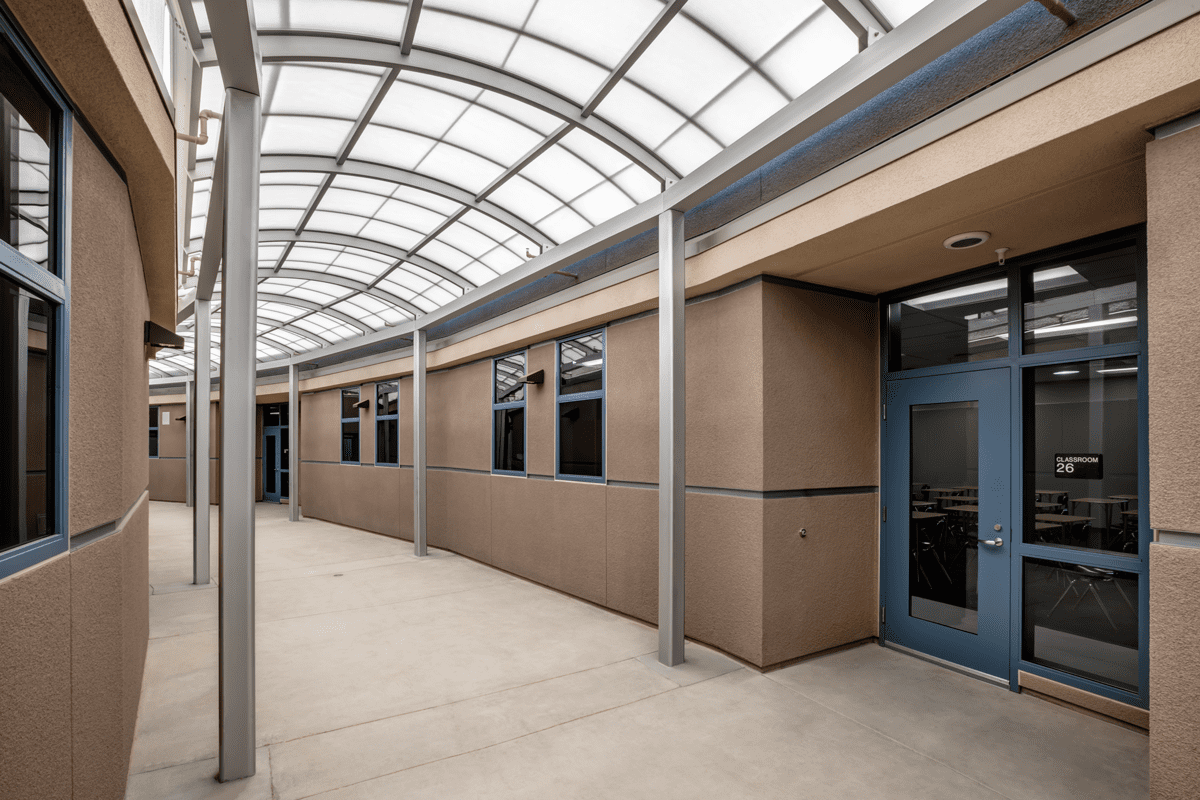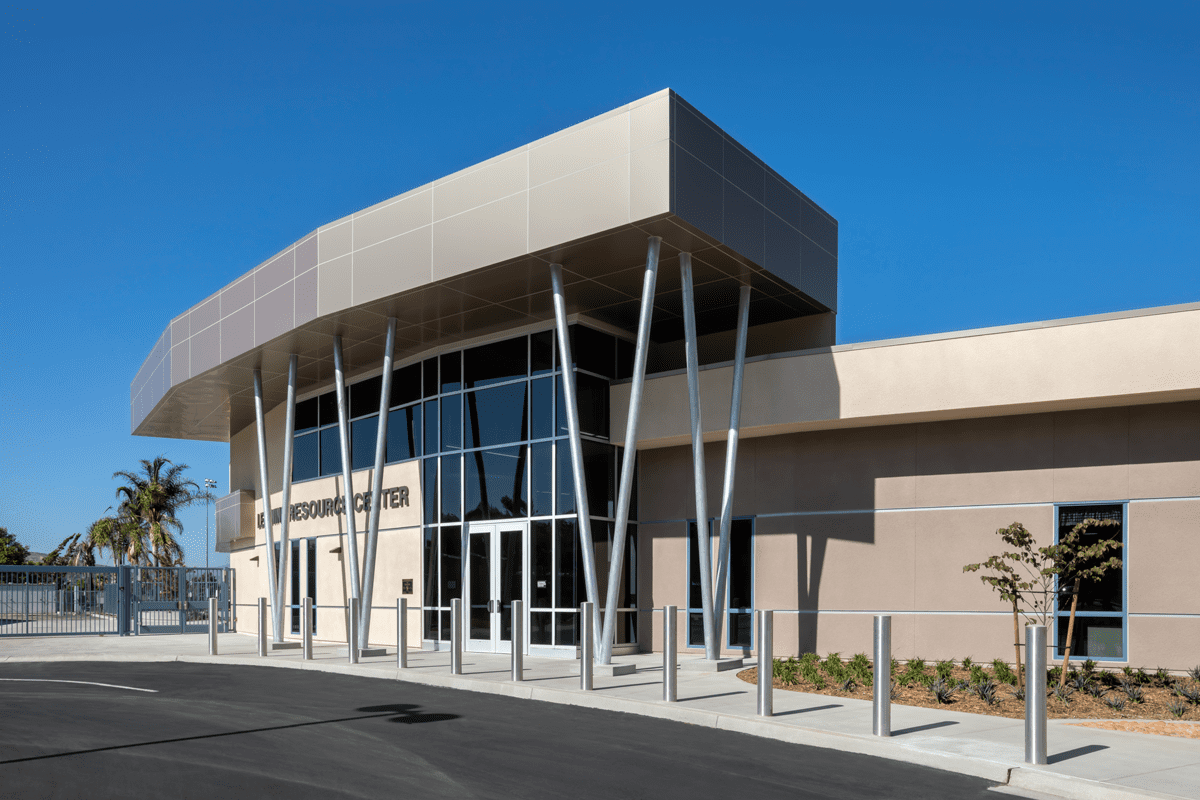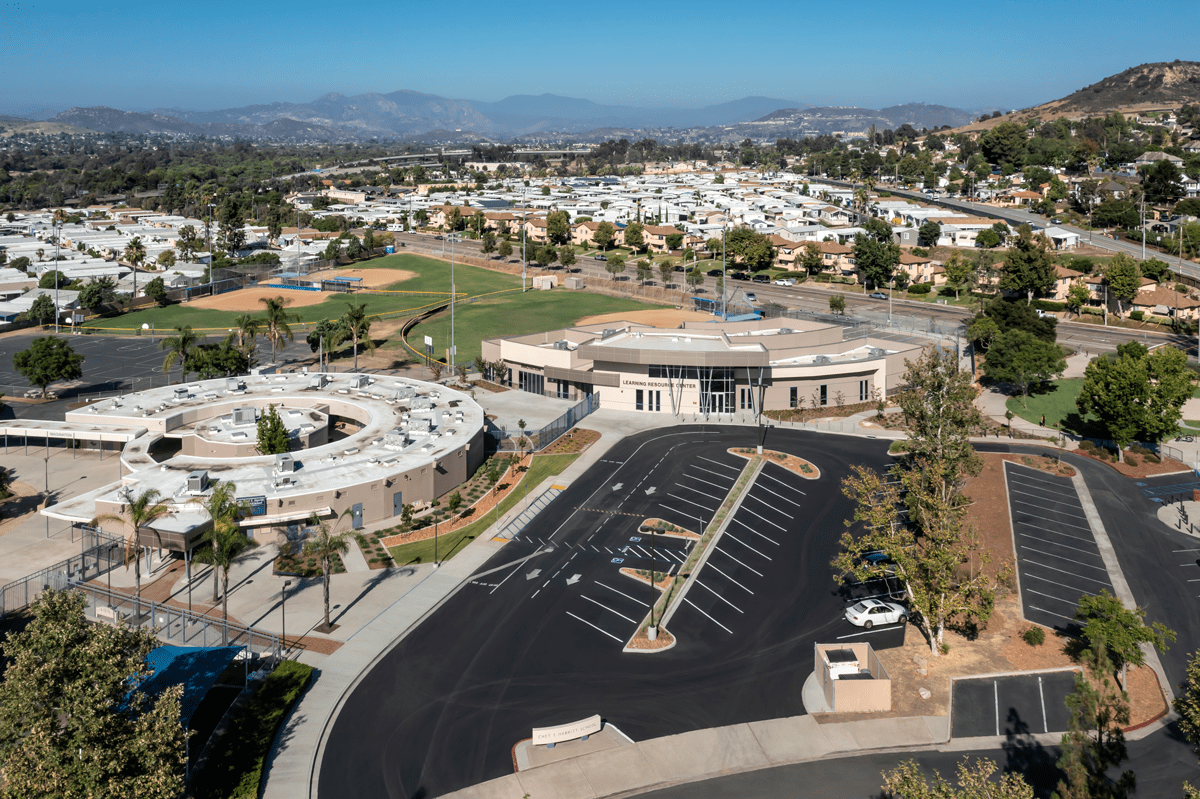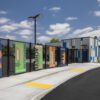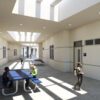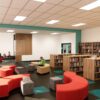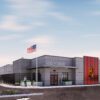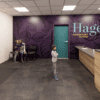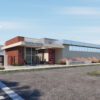Chet F. Harritt School’s campus expands by nearly 20,000 square feet through this extensive new construction project. The largest addition comes in the form of a 17,000 square foot middle school building.
The new building houses a Learning Resource Center (library), an Innovation Lab/Makerspace with access to an exterior learning courtyard, two middle school science classrooms with a shared workroom and access to dedicated outdoor courtyards, and four standard middle school classrooms.


